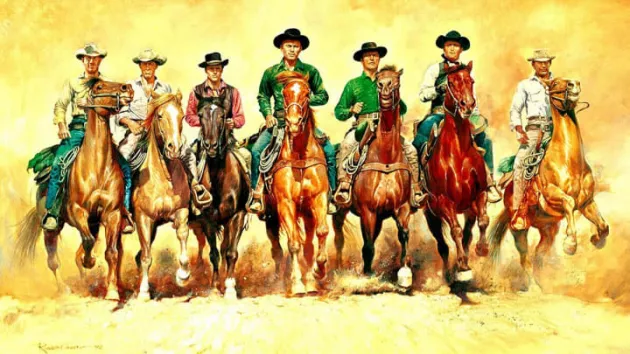Charles Manson and the death of an American genre
Published on 9th August 2021
If Charles Manson was a symptom of the collapse of American moral values, it was a collapse that the Western genre had predicted itself.
Whilst Don Siegel’s Coogan’s Bluff (1968) foretold the rise of the Mansonesque cult leader, films such as Fred Zinnermann’s High Noon (1952), George Stevens Shane (1953), and John Ford’s The Man Who Shot Liberty Valance (1962) depicted a rotten American body politic; Sergio Leone’s Dollars Trilogy (1964-1966) and Once Upon A Time In The West (1968) interpreted 19th Century American history from a Marxist-Leninist stance. If 1969 was the year that Westerns mosied off into the sunset, it also marked a thematic transformation - although Westerns became moribund in the eyes of Hollywood, post Manson classics such as Robert Altman’s McCabe & Mrs. Miller (1971), Mel Brooks’ Blazing Saddles (1974), and Clint Eastwood’s High Plains Drifter (1973), The Outlaw Josey Wales (1976) and Unforgiven (1992) portray an America that is as tragic as it is cruel.

According to Quentin Tarantino's film Once Upon A Time In Hollywood (2019), 1969 was the year the Western died, the year the Western got off its horse and drank its milk. If film was the most significant art form of the 20th century, then the Western genre was the signature form of cinema’s most powerful player, America. The emergence of the US as capitalism’s exemplar engendered the need of an origin story of American exceptionalism - the Western concerned itself with the white man’s historic mission to bring civilisation and justice to the lawless Wild West and the subjugation of indigenous people through the barrel of the Winchester rifle and the Smith & Wesson revolver. The birth of Pax Americana was buttressed in a philosophical sense by Stagecoach (1939), My Darling Clementine (1946), Red River (1948), The Searchers (1956), Rio Bravo (1959), and How The West Was Won (1962).
The phenomenal popularity and importance of television in American society from the 1950’s led to an explosion of the Western TV series, and it is this art form that is the declaration generale of Once Upon A Time in Hollywood. The white-male-reactionary political indoctrination through Western TV series such as Lancer, The Big Valley, Bonanza, Gunsmoke and The Virginian is examined by Claude Levi-Strauss in his book Myth and Meaning (1978) and in Will Wright’s Sixguns and Society (1975) where he demonstrates how the Western genre: ‘...presents a symbolically simple but remarkably deep conceptualisation of American social beliefs.’ However, by 1969 anger and paranoia caused by Jim Crow and American involvement in Vietnam meant the Conservative narrative of white, Christian patriarchal family values embodied by the Western genre had become redundant. The origin story had become an embarrassment. The Manson Family’s killing spree marked a societal and cultural paradigm shift in the eyes of Tarantino. The alternate history of the Tate-LaBianca murders employed by the director is an exercise in right-wing wish fulfilment, whereby an Eisenhower-era of American power and certainty is preserved, accompanied by the accoutrement of films directed by John Ford and Howard Hawks. Tarantino’s and the film’s conservative sensibilities are manifested in the movie's two protagonists Rick and Cliff - the former: a racist and a Ham, the latter: a racist, misogynist, homicidal war hero, who loves his dog.
Everything below is available to borrow from Dublin City Libraries.
Books: Myth and Meaning by Claude Levi-Strauss, Once Upon A Time in Hollywood - The Novelisation by Quentin Tarantino, and Sixguns and Society by Will Wright.
DVDs: Blazing Saddles, Coogan’s Bluff, A Fistful of Dollars, For A Few Dollars More, The Good, The Bad And The Ugly, High Noon, High Plains Drifter, How The West Was Won, McCabe and Mrs. Miller, The Man Who Shot Liberty Valance, My Darling Clementine, Once Upon A Time In Hollywood, Once Upon A Time In The West, Red River, Rio Bravo, Shane, Stagecoach, and Unforgiven.
Submitted by Tom from Drumcondra Library.